- Meaning
- Contraindications
- How to Do
- Precautions
- Supta Padangusthasana 1-2-3
- Supta Padangusthasana Benefits
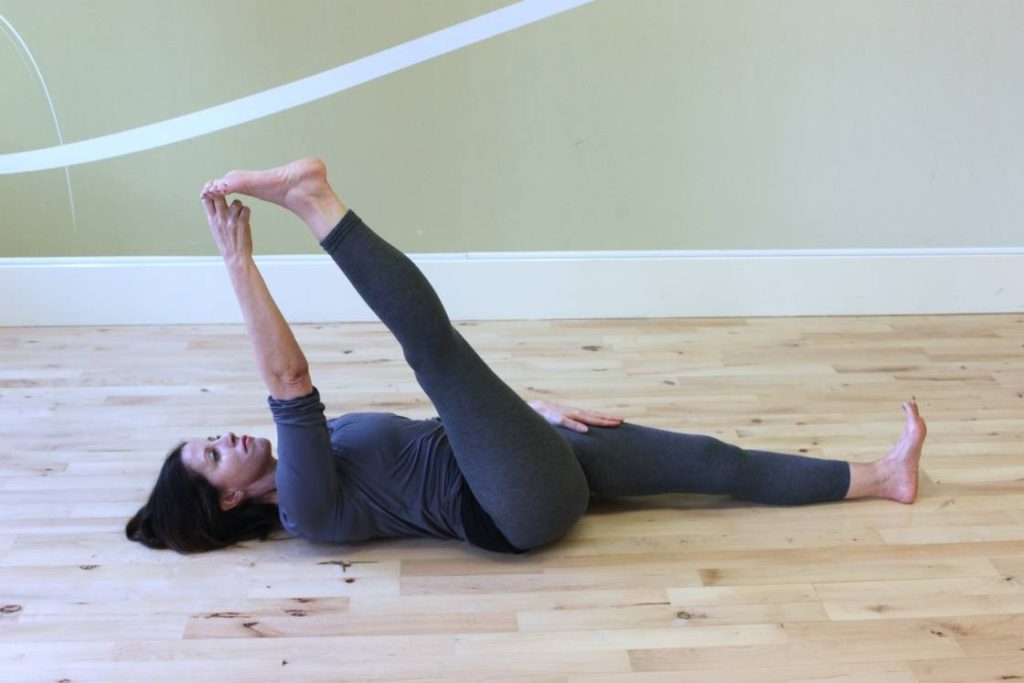
Supta padangusthasana is a supine variation of Padangusthasana (Big toe pose). It opens legs and pelvic muscles that give perfection in the forward bend poses. Besides, lying flat on the floor supports the back while stretching the hamstrings and calves – It relives the lower-back pain.
This pose is simply performed by lifting one leg off the floor with its big toe held by the corresponding hand. Bring the raised leg and trunk closer to rest the chin on the knee. The movement is further expanded by swinging the leg to the side grasping the toe intact.
Besides relieving the back stiffness it opens the hips and stretches the groins, hamstrings, and calves.
If it sounds challenging keeping your flexibility in mind, feel free to opt for its variations or use props as suggested below.
Meaning
Supta padangusthasana is a Sanskrit name for this pose. Focusing on its root terms individually gives a glance at this practice. There are four root terms in this name as follows:
- “Supta” means “reclining”
- “Pada” refers to “foot”
- “Angustha” means “big toe”
- “Asana” is “pose”
As the pose is performed reclining on the floor holding the big toe with hand, hence the name. It is translated as Reclined Big Toe Pose in English.
This pose offers anatomical benefits along with improving flexibility of the hip joints, legs, and arms.
Practice Guide of Supta Padangusthasana
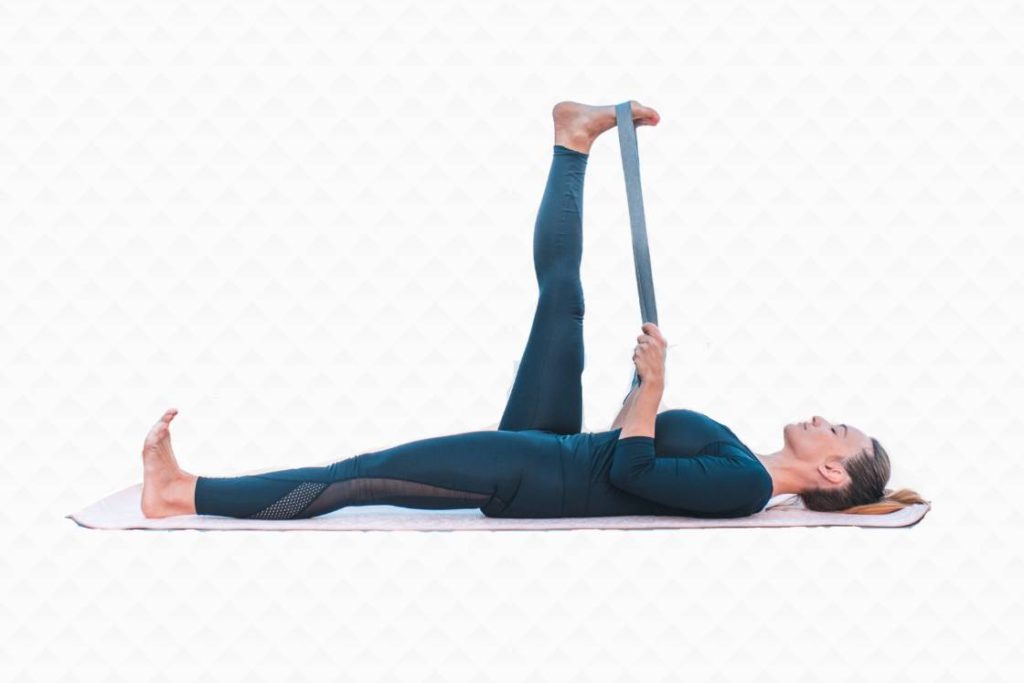
Contraindications
- Do not try this asana if there is an injury in the spine, shoulders, hamstrings, or quadriceps muscles.
- Pregnant women must avoid this pose from the second trimester.
- It is not an ideal posture for people with a broken knee or ankle.
- People suffering from diarrhea must refrain from this pose.
- Avoid practicing supta padangusthasana if you have asthma or bronchitis.
- If you have high blood pressure or tight thoracic muscles perform this pose only using a bolster or blanket under head.
Preparatory Poses
- Standing forward bend (Uttanasana)
- Bound Angle Pose (Baddha Konasana)
- Downward-Facing Dog (Adho Mukha Svanasana)
- Half Knees to Chest Pose (Ardha Pavanamuktasana)
How to Do Supta Padangusthasana (Steps)
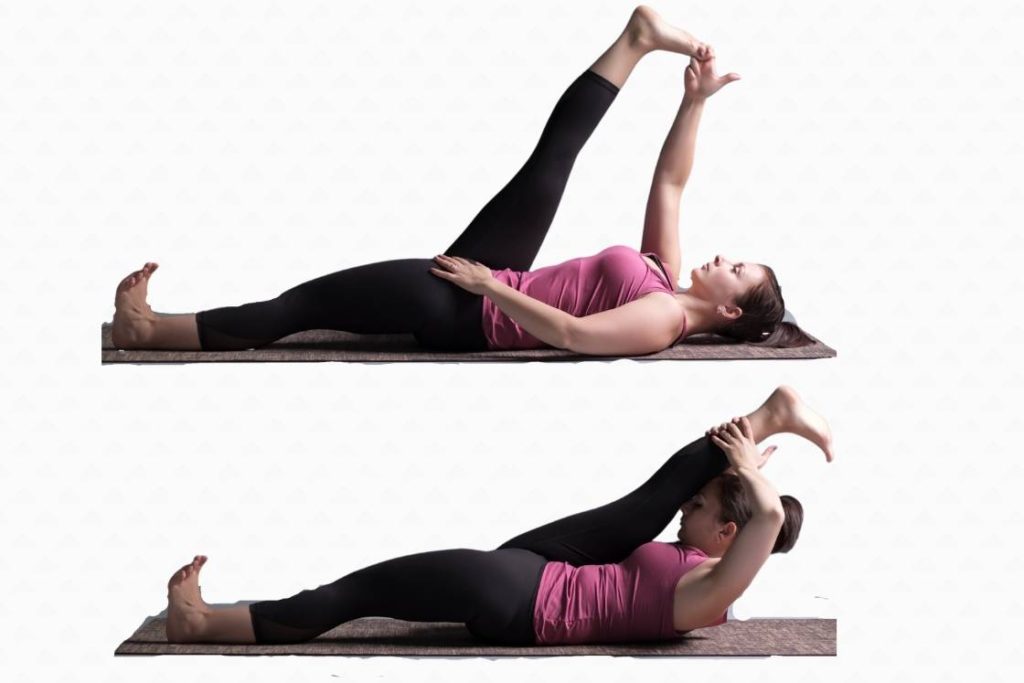
- Lie on your back stretching the legs on the floor and hands by your sides.
- Inhale, raise the left leg to bring it perpendicular to the floor.
- Raise the left arm and grab the left big toe between the thumb, index, and middle fingers.
- Keep the right leg stretched on the floor with right hand resting on the right thigh.
- Take 3-4 deep breaths.
- Exhale lifting the head and trunk off the floor.
- Bend the left elbow to pull the leg towards the head keeping the knee straight.
- Simultaneously, bring the head and trunk towards the leg so that the chin rests on the left knee.
- Hold the pose for about 20 seconds breathing normally.
- Inhale, drop the head and trunk to the floor and bring the left leg back to perpendicular position.
- Bring the left leg down to the floor and repeat the above mentioned steps switching the leg and arm position.
Precautions
Be mindful while performing this pose. Avoid these misalignments to gain only the benefits without getting hurt.
- Avoid flexing either knee while performing the pose.
- While lifting the leg off the floor, keep the hips grounded and pressed against the floor.
- Do not straighten the lower back, therefore maintain the natural arch between the hips and back.
- The resting leg must be kept stretched and firm on the ground throughout the practice.
Follow-up poses
- Standing Poses
- Seated Forward Bends
Props and Modifications
- Yoga strap – Wrap a yoga strap around the ball of the raised foot. Hold it with both hands to bring it towards the head and bringing the chin to the knee. Later swing the leg to the side holding the strap only.
- Block – Place a yoga block outside the raised hip. Bring the leg to the side resting the leg on the block. This will prevent lifting of the other hip off the floor. This is especially recommended for beginners.
- Against the wall – Practice it near a wall such that the heel of the lower leg is kept pressed against the wall. Beginners should try it taking the support of the wall. It helps to keep the lower leg firm on the ground.
- Bolster – Place a bolster or pillow behind the head if you are feeling a strain on the neck. The pose must provide relaxation on the back, therefore feel to use bolster behind the head.
Supta Padangusthasana 1-2-3
This pose has 3 most practiced variations to open the hips joints further. This combinedly called Supta Padangusthasana sequence. It comprises side stretching and flexing of lifted leg.
1. Supta Padangusthasana 1
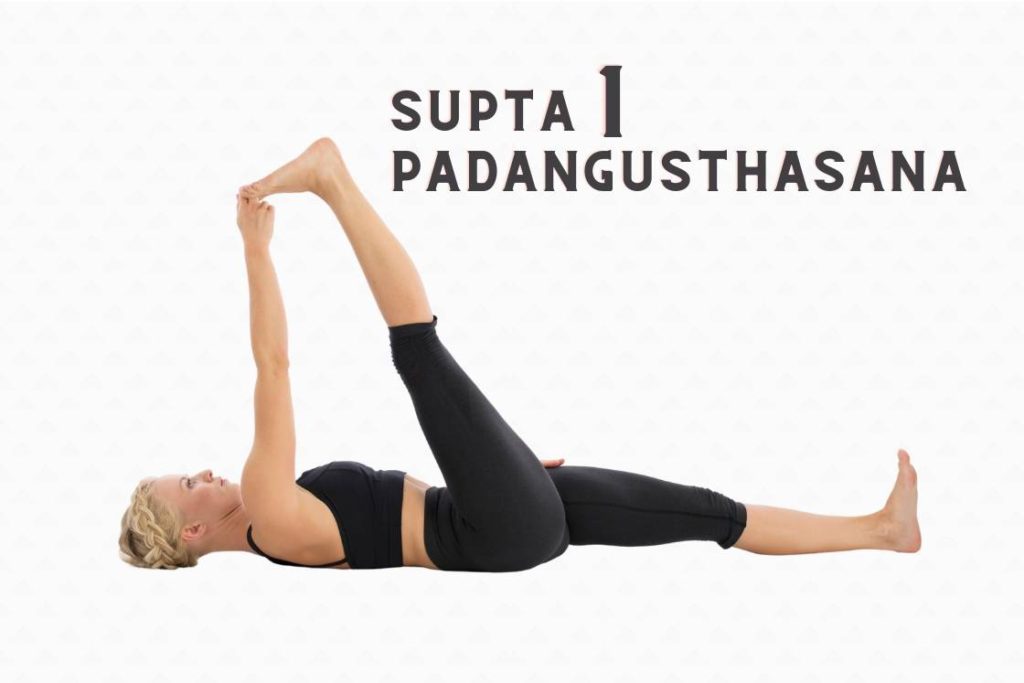
Supta padangusthasana 1 is the same as the main pose, mostly practiced in Iyengar yoga using a yoga strap around the ball of the foot. This makes the pose easily approachable by pressing the top foot against the strap and holding it with both the hands.
Using a strap in reclining big toe pose prevents lifting the shoulders while reaching the raised big toe. This is also recommended for the beginners to keep the rested leg firm on the ground.
2. Supta Padangusthasana 2
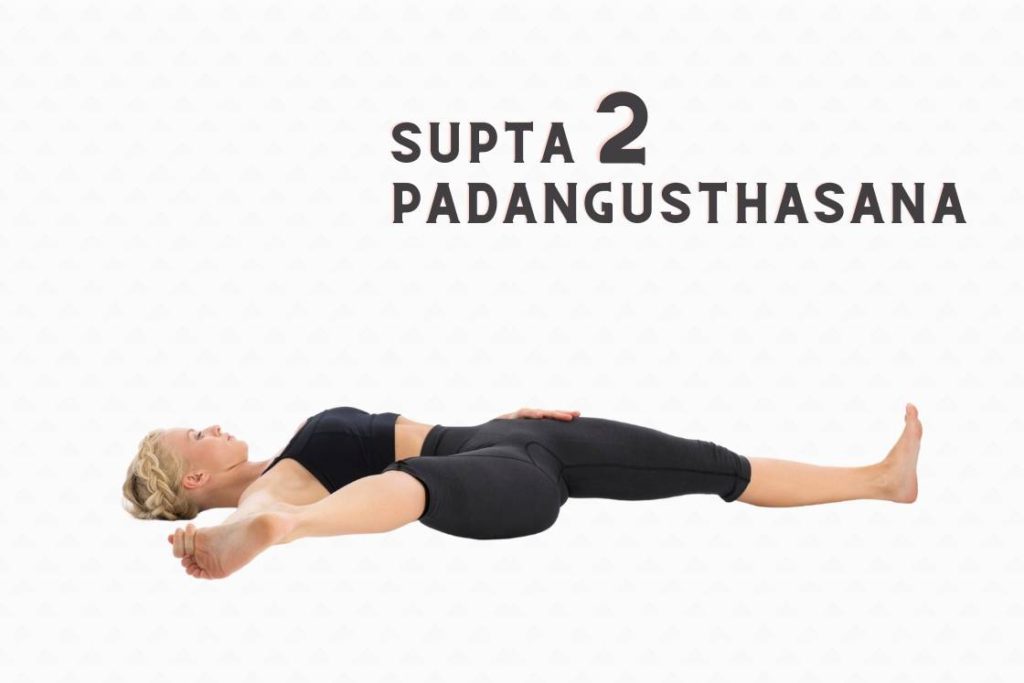
This variation is performed in continuation with supta padangusthasana 1. Here the lifted leg is further outstretched to the one side (side of the lifted leg).
When you bring the leg to the side make sure the hand holding the strap is aligned with the respective shoulder.
Bringing the lifted leg to the side and down to the floor further opens the hips and pelvis. It is highly recommended to get elevated relieving effects on sciatica pain.
3. Supta Padangusthasana 3
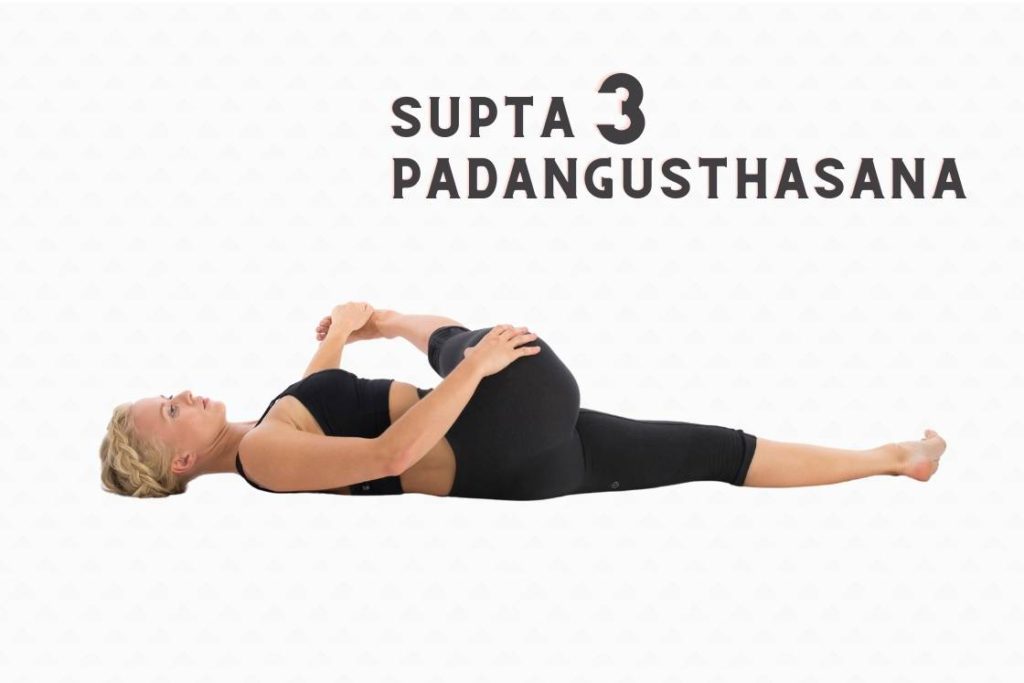
In the third variation, the lifted leg is outstretched to the opposite side switching the hands. The stretch is further enhanced by bending the rested leg on the knee and interlocking the fingers on the shin. Simultaneously, draw the outstretched ankle to be placed on the bent knee.
This variation also consumes the abdominal strength to raise the head and chest to firmly grip the hands around the shin.
Therapeutic Application
- Supta padangusthasana is popular for its relieving effects on lower backache and sciatica pain.
- This pose is beneficial to release any accumulated intestinal gas and cures constipation.
- It stimulates the prostate gland and alleviates the symptoms of benign prostatic hyperplasia (prostate enlargement).
- Performing this pose is also helpful to cure flat feet.
- The stretching of the pelvis floor muscles, groins, and internal reproductive organs is beneficial in overcoming infertility.
- This pose is also advantageous to ease menstrual discomfort and alleviates menopausal symptoms.
- It strengthens the knees and hip muscles, thus performed to treat osteoarthritis of knees and hips.
Supta Padangusthasana Benefits
1. Strengthens the leg muscles
Supta padangusthasana is a posture majorly stretching hamstrings, calves, and ankle muscles. The knee is also stretched throughout the pose. It strengthens these muscles by making them flexible.
2. Activates the hip flexors
The hip joints are also stretched performing this pose, especially in 2nd variation. It expands the psoas and gluteal muscles. It helps in opening the hips and strengthens the hip joints.
3. Stretches the arms and shoulders
The arms are also engaged to hold the pose. It stretches the shoulder, elbow, and wrist. The arm is fully extended when you drag the leg to the side along with the arm. This also enhances the strength of the arms.
4. Improves digestion
While raising the leg and drawing it towards the head the core muscles are actively involved. It stimulates the abdominal organs leaving a massaging effect on the stomach, liver, kidney, pancreas, etc. This helps in a better supply of blood to these organs thus facilitates digestion.
5. Stimulates the pelvic muscles
It stretches the inner thighs, groins, and pelvic floor muscles. It enhances the blood flow towards the reproductive organs activating their performance. Therefore this pose is beneficial to promote reproductive health.
6. Improves awareness of the practitioner
As it is an asymmetrical stretch performed on one leg at a time, still both the legs get the benefits. It is so because it requires the practitioner to be mindful to keep the resting leg stretched and firm.
Thus this practice is an act of increasing the consciousness level and brings body awareness.
Conclusion
Supta pandangusthasana is a beneficial pose in numerous ways. This is an incredible stretch especially for athletes due to the stretching as well as relaxing effects that it brings.
Perform this reclining pose to rejuvenate the lower back muscles and avoid the chances of getting a hernia.
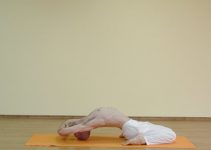




The posture in Supta Padangusthsana and Ardha Halasana are almost similar, except holding both the feet by the respective hands in Supta Padangusthsana. But, the benefits differ; could you pl mention the reason.
Thank you for your insightful observation! While the postures of Supta Padangusthasana and Ardha Halasana may appear similar, the key distinction lies in the subtle variation of holding both feet in Supta Padangusthasana. This minor change enhances the stretch and engagement, leading to nuanced differences in the benefits. In Supta Padangusthasana, the focused foot-holding adds an extra layer of intensity, contributing to improved flexibility and targeted muscle engagement. Feel free to explore these nuances in your practice!
Why should one not practice supta padangusthasan if one has asthma, even if there is no discomfort while holding the pose?
Supine Padangusthasana, also known as Reclining Hand-to-Big-Toe Pose, may not be suitable for individuals with asthma who experience shortness of breath while lying flat on their back. This is because the supine position can put pressure on the diaphragm, which can cause breathing difficulties for some individuals.